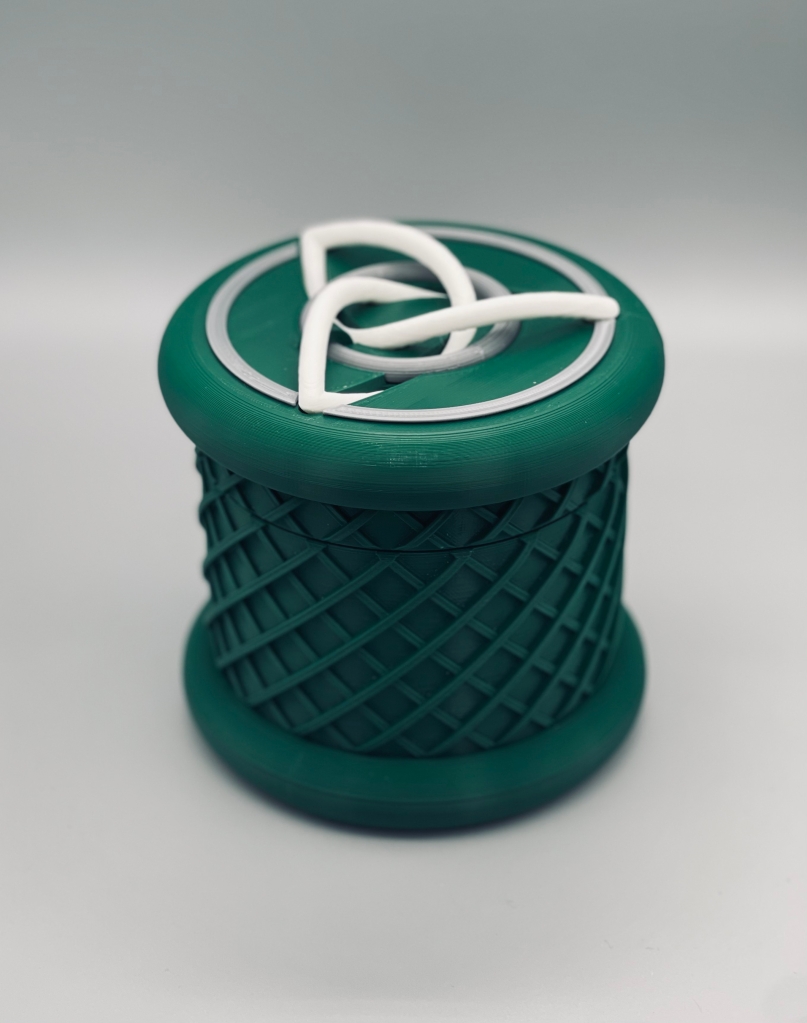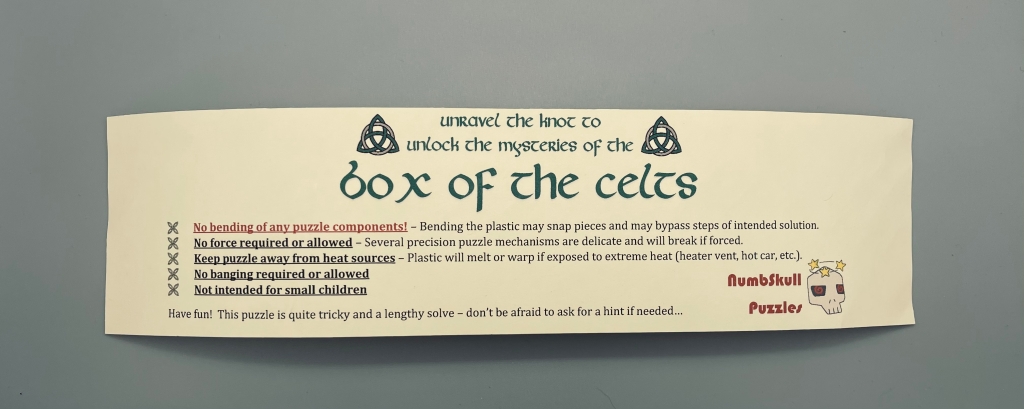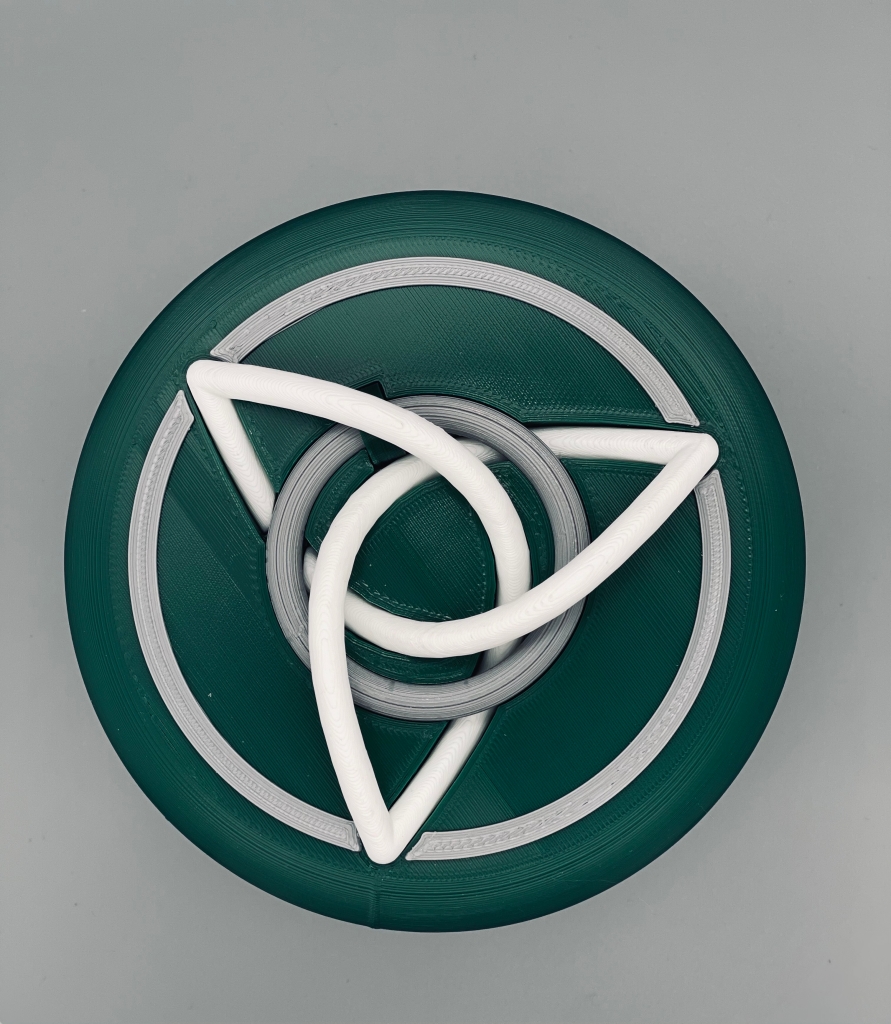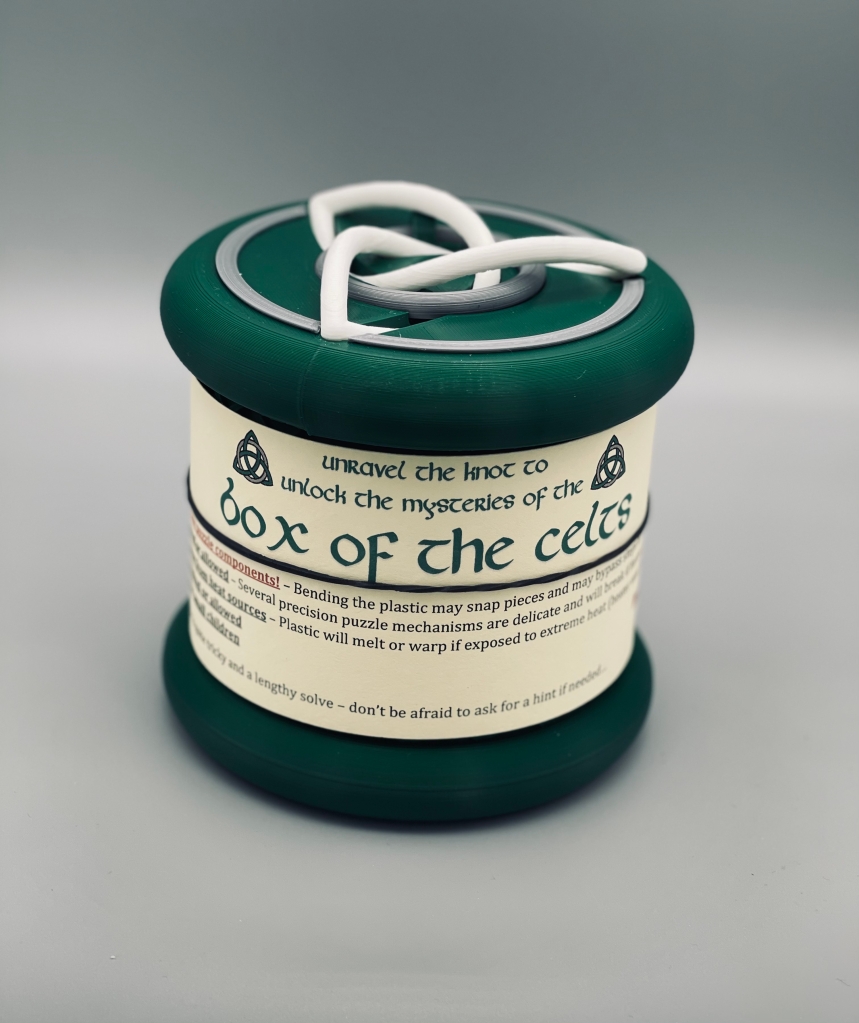Dabbit Invasion
Tye Stahly and Haym Hirsh, Nothing Yet Designs, 20 x 16 x 12mm (inc. jail), Acrylic,
We knew it was coming. We knew it would be big and heavy and made of acrylic. We knew it would involve dabbits (invading). We knew it would be a big, complicated take-apart sd puzzle box-like thing that would involve a packing design by Haym Hirsch – the end result is even bigger and complicateder than I’d anticipated.

Dabbit Invasion is the newest puzzle by Tye Stahly of Nothing Yet Designs (with Haym Hirsh providing the design for the final packing puzzle). Tye came on the puzzling scene with a strong start, his Pair O’ Dice receiving properly positive praise for its entertaining sd trickery. He kept busy over the ensuing months, bringing us some great designs that were otherwise far too difficult to get: unique packing puzzles from Haym and Frederic Boucher, among others.
If you don’t know what a dabbit is, you will when you see one. Neither duck nor rabbit and yet both at the same time, the optical illusion dates back to the 19th century; I learned this from the puzzle’s backstory, which also warns us that the dabbits have already invaded, sneakily spreading out while we foolishly did nothing. We are tasked with finding and jailing all ten dabbits and their two eggs before resetting the puzzle.
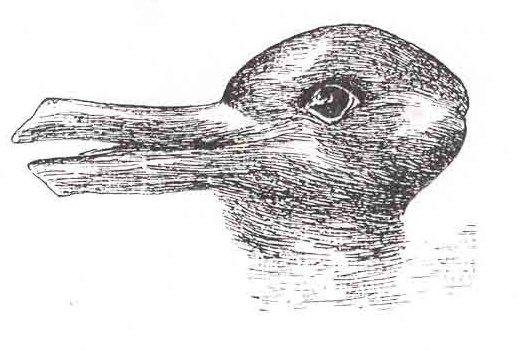

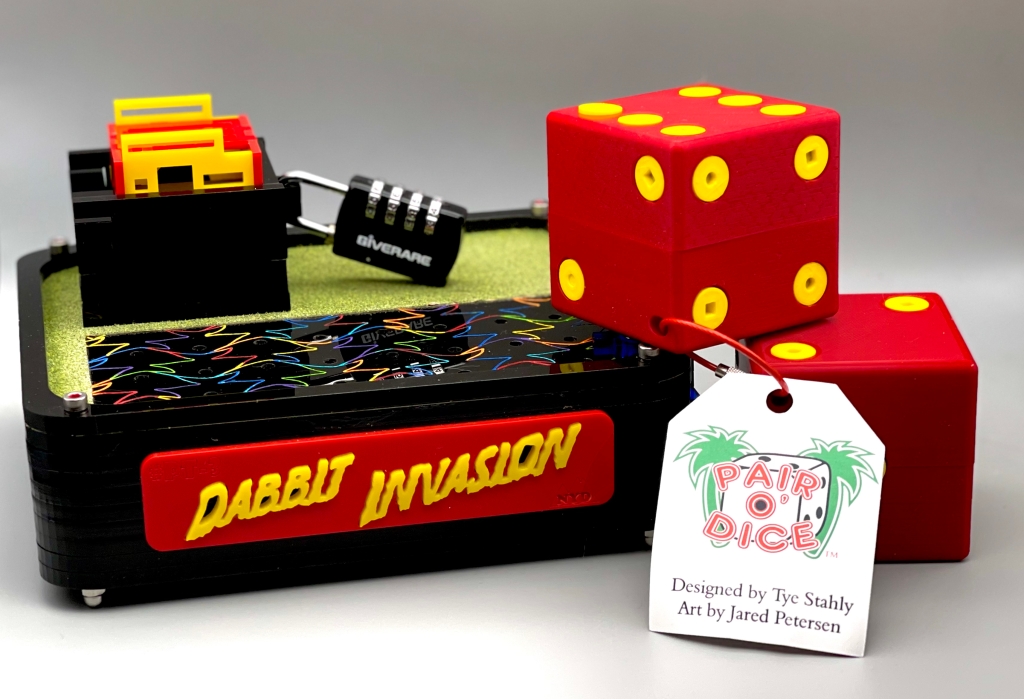
I was lucky enough to have the chance to buy an early copy and was kindly offered the chance to choose my titular colors (future copies will use set colors) and I chose red and yellow to match my copy of POD (which was designed to best match the dice from Catan, because I’m cool like that). The puzzle’s name is prominently displayed in a font and style reminiscent of Mars Attacks and 50’s B-film fare (just so you don’t confuse it with another giant acrylic puzzle box with a removable cage trapped in a frame by a combination lock).
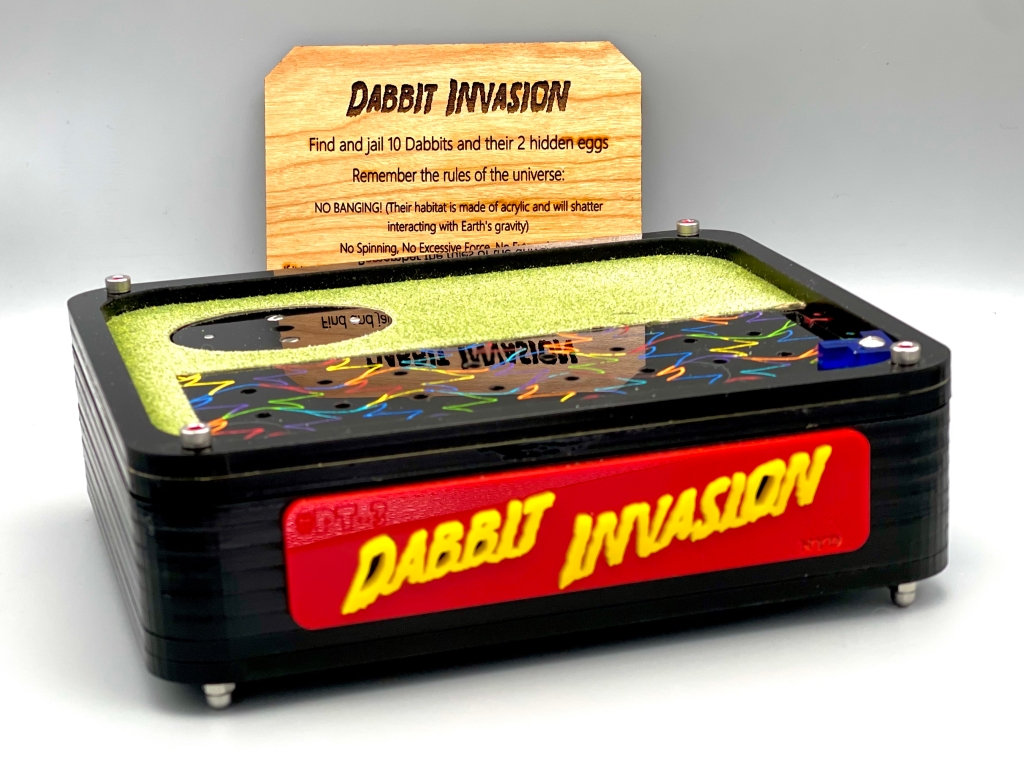
It came packaged extremely well and is heavy, feeling dense and solid. The jail is in a locked frame attached to the top with magnets and there is a piece of laser cut wood with the story and instructions engraved onto both sides, setting the stage and giving us our favorite rules (no banging, spinning or excessive force, etc). Tye graciously gives us a bit of a head start with a single dabbit already jailed; otherwise, there is no clear indication of how or where to begin. There are a couple things that seem like they will probably do something at some point, but a cursory examination of the puzzle did not give me any immediate ideas of how to proceed.

I began coming up with theories (which were mostly wrong) and proceeded to go down a pretty deep and mostly fruitless rabbit hole (dabbit hole?). I sought a nudge from Tye (obviously this was only because I wanted to be able to provide feedback as an early tester…. obviously… ahem), and this gave me an idea, which gave me an aha, which had me laughing and kicking myself as it hit me: things fell into place, and I was able to make some progress, doing and finding things for a bit until I hit another wall, and then another, and another, and so on.
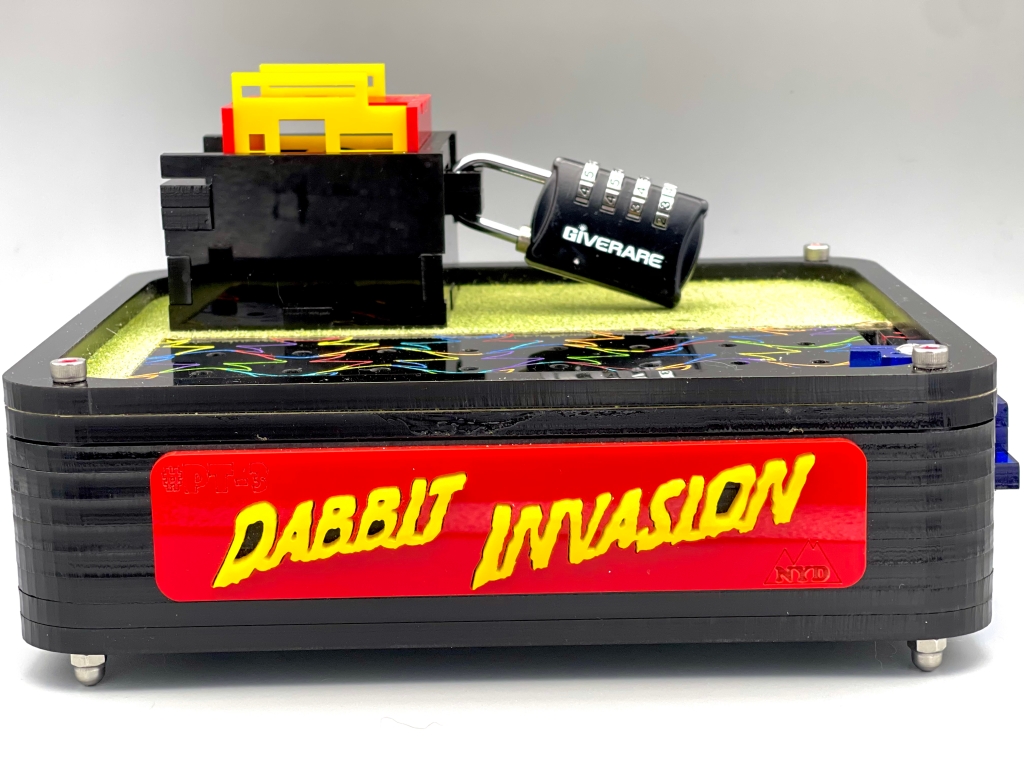
Tye has clearly put a lot of thought into carefully walking the line between keeping things hidden but not buried, challenging but not impossible. Dabbit has a great rhythm: there are plenty of stops and starts, allowing you to make good progress and multiple discoveries as you work your way through a number of varied and interconnected puzzle genres and mechanisms. Very little of it came easily, and all of it felt totally fair. It is the kind of puzzle that surely has something for everyone, and keeps things flowing between sections; the disparate puzzles are linked, meshing well and smoothly, and in such a way as to keep the puzzler hooked, even when stuck.
By spreading the dabbits and eggs throughout the puzzle, it keeps you engaged in the story throughout the solve, reminding you that your progress is building towards something and keeping you in the story by sprinkling the thematic rewards for your successes along the way in preparation for the final puzzle.
The multiple puzzle types had me smiling and scowling, concentrating and contemplating, discovering some great aha’s, needing to think and plan or unearthing tricks through exploration and experimentation as my pile of dabbits grew. I got stuck several times, needing to step back and rethink some assumptions, or to try various random things in the hopes of figuring out what was next. This is most definitely a puzzle that delights in the joy of discovery, which may not always follow a clear path.
Eventually, I knew I had completely solved the box as I had collected all ten dabbits and the two rectangular eggs – the last of these was particularly tricky for me and led to a strong, final aha: a fun finale to an excellent puzzle box. My glorious revelry was soon cut short when I remembered that I was by no means done solving the puzzle. As I moved on to the culminating packing puzzle, I quickly realized that packing them into the jail was, in the words of Hannibal as he and his elephant stared at the mountains before them: “freakin’ hard.”

If you’ve done some of Haym’s many designs, you’re aware that he knows how to design a fun packing challenge: Dabbit’s packing puzzle is a particularly difficult design. Before even attempting to pack them into the jail, I spent a few mostly fruitless hours trying (and failing) to find the correct build outside the cage, getting soooo close to finding the right configuration (but always a voxel or two off). I probably would have ended up stuck at this stage for an embarrassingly long period of time but I really did want to give Tye some feedback (and, perhaps more importantly, I wanted to jail those darn dabbits before it was too late). So Tye provided a partial burrtools image to assist (don’t judge: people in glass houses shouldn’t throw stones… or anything really… then again, people who live near people in glass houses should really try and respect their privacy instead of judging them for what they do at home).
Eventually, I found a workable build and set about trying to solve the puzzle; I found that I benefited more from some logical thinking rather than just random packing and pokery (always a sign of a good packing puzzle). After some examination, I figured out the basics of how to approach it, did some of that thinking stuff, planned my approach, and eventually got there. Success! Glory! Happy Dance!
But the puzzling doesn’t stop there! We have been told that to truly solve this, one must reset it completely. Oftentimes, this “just” means going through the solve backwards – yes, this can sometimes be quite tricky (POD comes to mind), but you usually won’t find puzzling that is unique to the reset. I was therefore pleased to find that even after solving the puzzle, I had to figure some things out that I’d not realized would require such figuring-outness; there are a few mini-puzzles and steps that come only as you go about getting back to the puzzle’s original state, steps that are only tricky in reverse. Eventually everything was all nice and reset, the dabbits once more frozen in invasion formation, awaiting the Return of the Puzzler.

I ran back through the solution and reset (“ran” is an exaggeration, I “slowly progressed” is probably more accurate) while writing out some feedback for Tye, and marveled at how much fun he has packed in. He clearly spent a lot of time planning and tweaking this puzzle, which feels like nothing less than a labor of love from someone who excels at executing an excellent idea into existence, whether his own or someone else’s.
I’m not sure how many of these will be made, so be sure to keep an eye out; Tye will likely release a few batches of them and is unlikely to return to such a complicated, time-intensive design.
I definitely recommend fighting off the Invasion, but if you somehow don’t like sequential discovery puzzling involving a variety of distinct puzzle types brought together into an interconnected, cohesive puzzle box with a unique reset, there is the possibility that he may one day release the packing puzzle as a standalone (likely with the fun theme removed). It may not be as rewarding as when you earned the right to pack by working to get there, but you’ll still find solid ahas and a cool packing puzzle. And at least you’ll have cheated your way there even more than I did 😉



